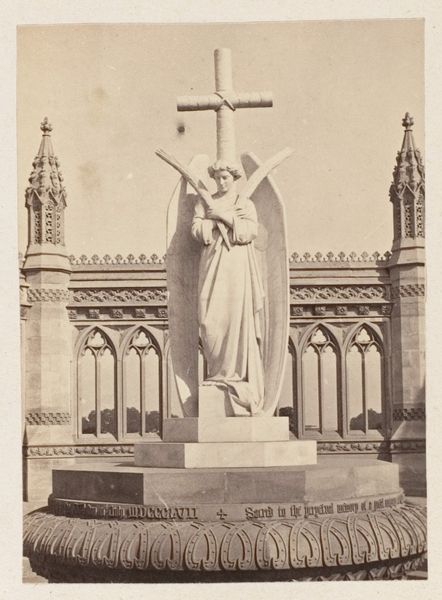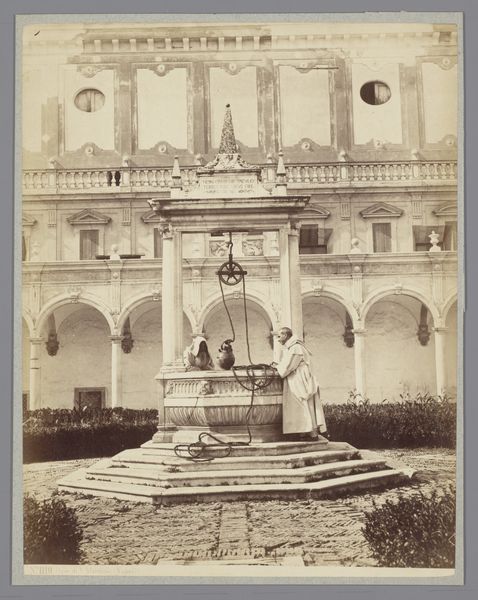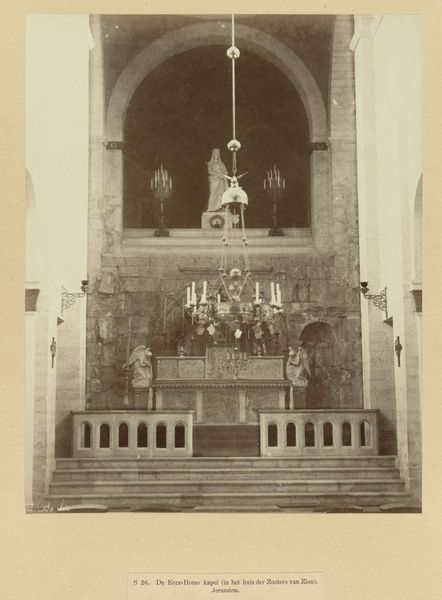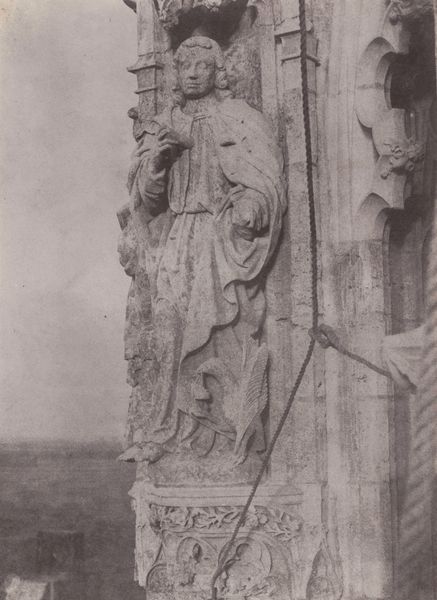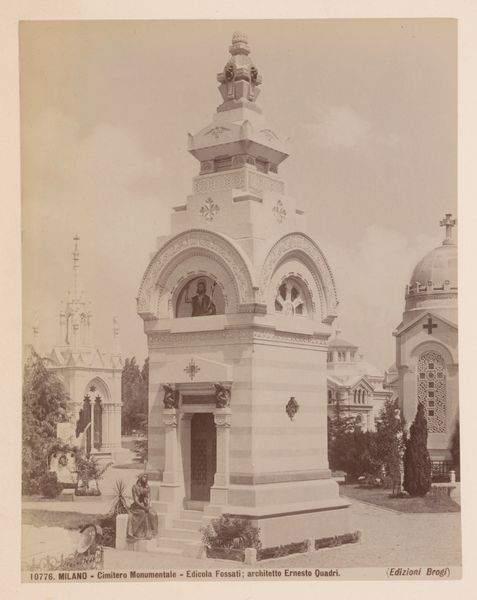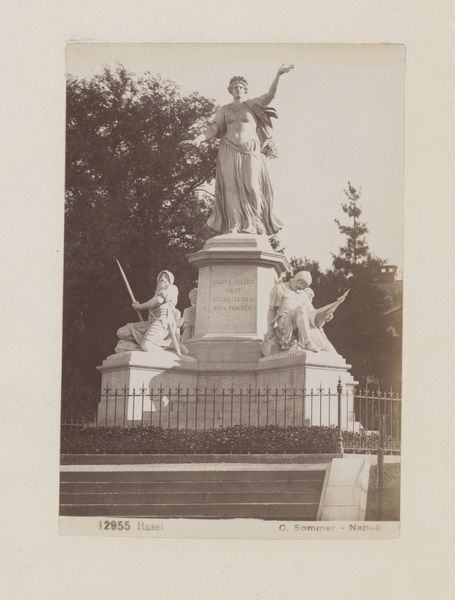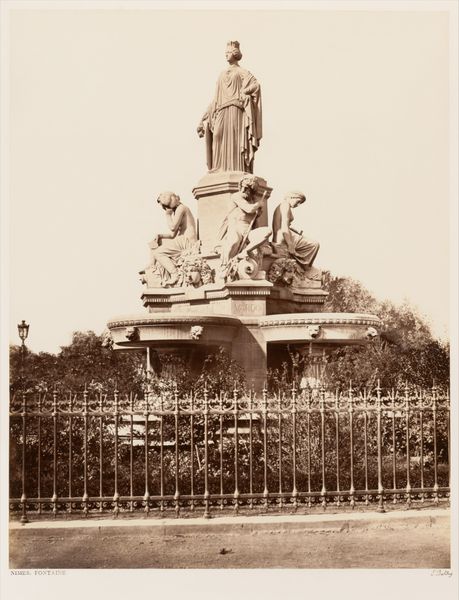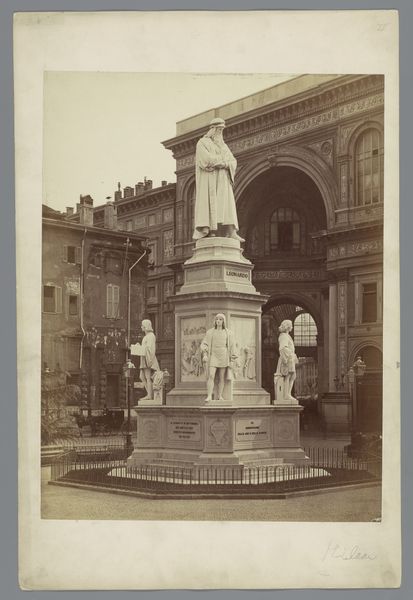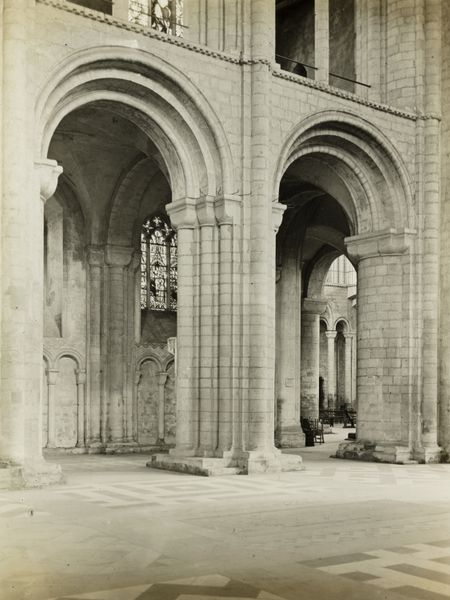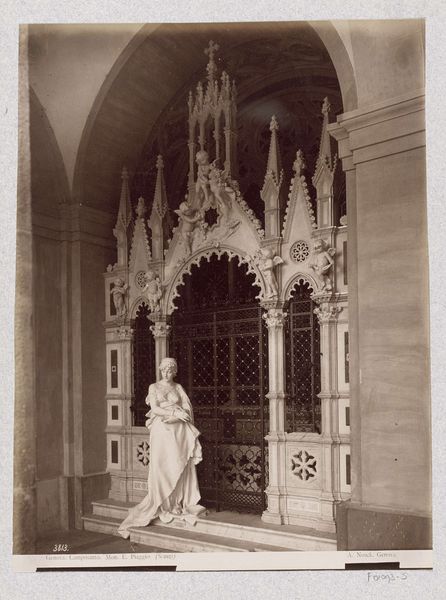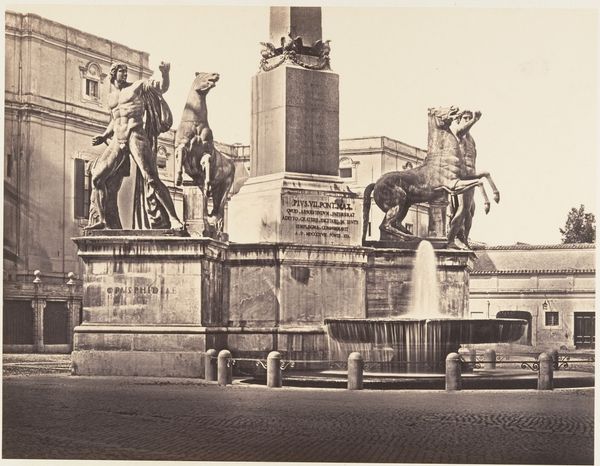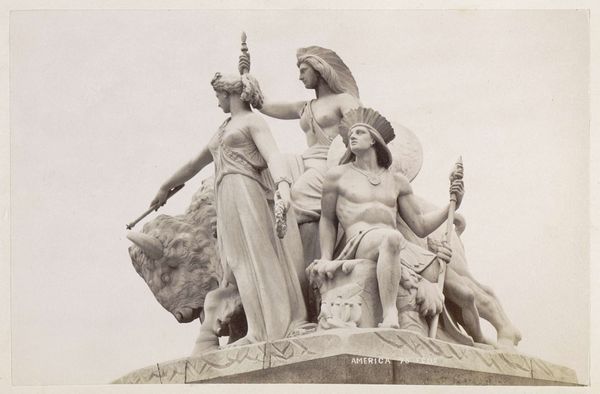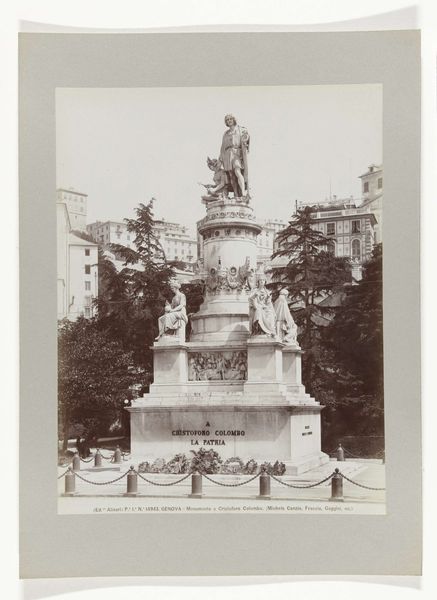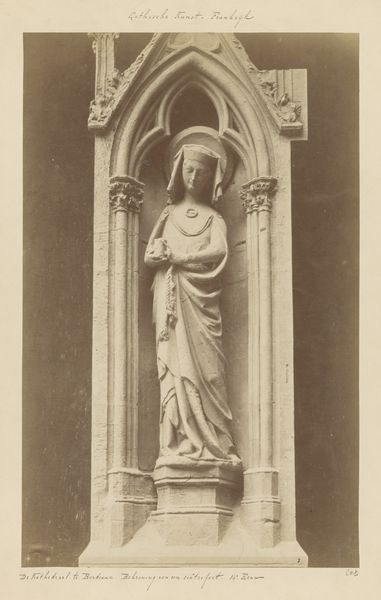
British memorial at Bibighar in memory of the siege of Kanpur, Uttar Pradesh, India 1863 - 1870
0:00
0:00
photography, gelatin-silver-print
#
portrait
#
landscape
#
photography
#
historical photography
#
orientalism
#
gelatin-silver-print
#
19th century
Dimensions: height 284 mm, width 236 mm, height 366 mm, width 417 mm
Copyright: Rijks Museum: Open Domain
Editor: Here we have Samuel Bourne's gelatin silver print, "British memorial at Bibighar in memory of the siege of Kanpur, Uttar Pradesh, India," created sometime between 1863 and 1870. The scene is dominated by this almost ghostly white sculpture of an angel and a large cross, but there’s something unsettling about it. What's your interpretation of this work? Curator: It’s interesting you use the word unsettling. Bourne’s image reflects a very specific socio-political moment: the aftermath of the Sepoy Rebellion and the consolidation of British power in India. The memorial itself is an exercise in power, isn't it? Erected on the site of a massacre, it attempts to impose a British narrative of loss and righteousness onto Indian soil. Editor: So the choice of a Western angel and cross isn’t just a symbol of mourning, but a statement? Curator: Precisely. Consider the architecture. Gothic revival elements speak of British identity and dominance. The memorial aestheticizes a brutal history, masking colonial violence with an image of serene piety. Does it evoke a sense of reconciliation to you, or something else? Editor: More of an assertion, I think. Almost like claiming the land and the narrative through visual propaganda. Curator: Exactly. Bourne's photography played a vital role in shaping British perceptions of India, often reinforcing imperial narratives. It also brings up questions about how photography was—and is—used to document, and sometimes, to manipulate history. Editor: I never would have thought of it as having such a loaded history, all wrapped up in one image. Thanks for clarifying all this, it helps so much. Curator: The complexities behind seemingly simple photographs like this are immense. There is always more to unpack, isn’t there?
Comments
No comments
Be the first to comment and join the conversation on the ultimate creative platform.
